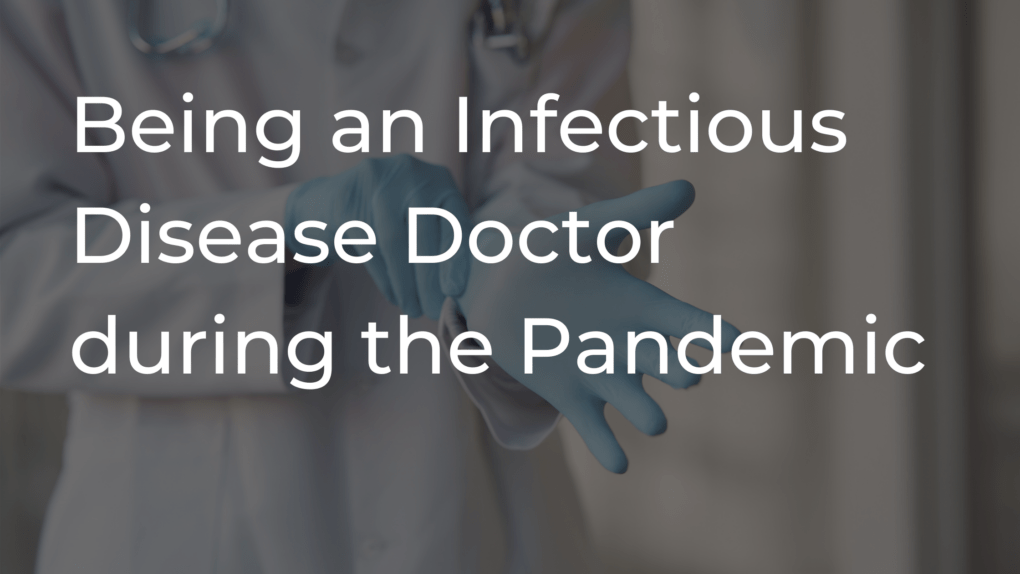“When I was applying for infectious disease, I never imagined that one day there will be a pandemic and I will be on the front line but here we are,” said Dr. Etienne Djevi, an Infectious Disease Doctor based in Little Canada.
CTV got the chance to virtually interview Djevi this past July on our Cities Speak podcast about what it’s like to be an infectious disease doctor during COVID-19.
What does an infectious disease doctor do?
Djevi is originally from Benin, West Africa, and has lived in the United States to further his studies in infectious diseases for the past 14 years. The study of infectious disease is a specialization within internal medicine where experts diagnose and treat infections. “[We treat diseases] whether it is a viral infection, which is what is in the news now, bacterial infection, fungal infection, parasitic infections,” said Djevi.
Preparing for a pandemic
“How have the last few months been for me? That’s a really loaded one,” said Djevi when we asked him to describe what’s been happening the past few months within his field. According to Dejevi, he and his colleagues we’re already predicting that COVID-19 would come into the United States back in February, but were not sure how far it would spread. “March 8 was when I decided that for the safety of my family and my loved one I chose to start sleeping in a different bedroom, taking a shower in a separate bathroom, and no one goes in my car,” said Djevi.
Struggling as a frontline worker
After this, things started to get busy for frontline workers. At one point, Djevi worked 19 days in a row, took two days off, and then worked another 12 days in a row. “It has been a really challenging moment in terms of the work that needs to be done physically, but also the emotional and mental health needs that came with all of it. With me, not hugging my kids and my wife for several months, not being able to get close to the people I work with at a hospital that I consider to be my family,” said Djevi.
However, Dejevi said the most painful part of his job right now is seeing once healthy people struggling to breathe, hooked up to ventilators, and some even dying all without being able to be with their loved ones. “I’ve been in medicine for over 20 years now. It has always been that at least when people are dying, their families are around to say their goodbyes and show their love. But COVID has really shattered that,” said Djevi.
Firsthand experiences
One message that Dejevi stressed heavily in his interview was that COVID-19 is not a hoax and is very real. At the point of this interview, Dejevi had taken care of over 150 patients and has presumably seen many more since then. “It is troubling that we are still having to fight misinformation or disinformation campaigns to get people to understand how serious this is,” said Djevi.
Dejevi recounted his first interaction with a COVID-19 patient. He remembered feeling scared as he walked into their room. “I’ve never been scared to go into a patient room because, that’s what I trained to do… but I found myself sweating, praying that this is not it for me and for my family,” said Dejevi.
Healthcare disparities
It has been found that COVID-19 is disproportionately affecting people of color, and Dejevi spoke on this firsthand. He remembered walking into the ICU and seeing that there were eight or nine people there with seven of them being people of color. “Question is, how did we get there,” said Dejevi.
Dejevi talked about how the gap in healthcare access between different races was a problem even before the pandemic. “Things like high blood pressure, diabetes, obesity, asthma are linked to being poor, not having the literacy that is needed to do advocacy for good health. Those things were present and have been present for generations before COVID came along,” said Dejevi.
Dejevi pointed out that the people who were being most affected by the disease at this point were people who worked at low wage jobs such as restaurant workers and nurses aids. “Those workers were deemed essential and as a result of that had to go to work. And with work comes the exposure and with the exposure comes the infection,” said Dejevi.
How you can help
There are two main things people can do to help stop the spread according to Dejevi. The first is wearing a mask when you are out in public. “It’s showing that you have compassion for health-care workers putting their lives on the line every day trying to provide care for the people who are already infected. Wearing a mask is saving lives,” said Dejevi. The second way to stop the spread is social-distancing. Infectious diseases are spread when people are within a close proximity to each other. “So if we keep our distance and wear masks, we are going to definitely decrease the spread of the virus and hopefully we’ll have a vaccine so that people can get vaccinated and not be infected at all,” said Dejevi.

